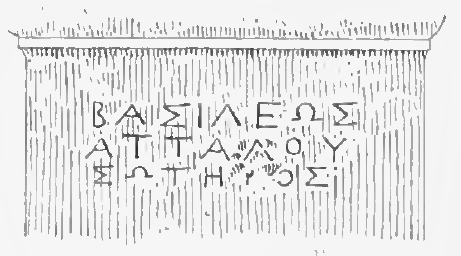
PHRC022 : Dedication to Attalos I, Pergamon - Mysia (200-150 BC) Dedication
Permanent ID http://s.phrc.it/phrc022
Images:
Photo 1: Drawing of the inscription, IvP I 45
Photo 2: Sanctuary of Demeter; via Wikimedia Commons

Text constituted from: IvP I 45.
Other editions: .
See also: Schwarzer 1999, p. 256; Suk Fong Jim 2017; Caneva 2020.
Images: IvP I 45 (drawing).
Further bibliography: On the sanctuary of Demeter, see Bohtz 1981; Ohlemutz 1968, p. 203-224; Radt 1999, 180-186; Agelidis 2011, p. 179-181; Steuernagel 2015, p. 368; Pirson 2017, 63.
Online record: PHI
This rectangular altar of Attalos I Soter was found in the sanctuary of Demeter, one of the most prominent sanctuaries in the early Attalid period: it was already monumentalized under Philetairos and Eumenes I and was considerably enlarged under Attalos I (for the chronology, Bohtz 1981, p. 56-60; Steuernagel 2015, 368; Pirson 2017, 63). Even though the depth of the altar is not provided by the editor, most probably this specimen was similar to the other Attalid altars from Pergamon: their limited dimensions made them appropriate for libations and censing rituals, not for animal sacrifices (but see the possible exception of PHRC020, from Mamurt Kale).
The writing of A with a bowed crossbar may point to an intermediary period between the earliest specimens, probably dedicated in the years 230s-220s (cf. PHRC018), and the later ones which show a writing of A with broken crossbar, probably belong to the 2nd century BC (see commentary to PHRC021). Accordingly, this altar might belong to the end of the reign of Attalos I or testify to a posthumous cult in the early reign of Eumenes II (Caneva 2020).



